Quantum dots are semiconducting nanocrystals that display size dependent properties. These properties arise due to quantum confinement effects which are only observable when the nanocrystals are synthesized to be just a few nanometers in diameter. The most apparent consequence of confinement is the size dependent band gap energy. This can manifest itself visually by simply looking with your eyes at the emitted colors of QDs of different sizes (Figure 1). As QDs are made to be smaller, the confinement of the wavefunction becomes stronger and the bandgap increases. This implies that smaller QDs emit bluer light (higher energy) compared to their larger counterpart which emit redder light (lower energy).

Figure 1: From left to right are progressively larger CdSe QDs. Smaller QDs emit cyan and larger QDs emit red. Intermediate sizes cover the rest of the spectral range.
Simple sizing curves can be obtained by correlating the bandgap energy derived from steady state absorption and the extracted size obtained by transmission electron microscopy. In Figure 2, you can find empirical sizing curves for CdS, InP and CuInS2 QDs.

Figure 2: Empirical sizing curves for CdS, InP, CuInS2 and PbS QDs
Advantageous technological properties inherent to QDs are their solution processability, tunable optical properties and modifiable surface chemistry. Combined with state of the art synthetic schemes, QDs are now widely applied in commercial products. Our aim is to expand the scope of QD based applications by finding solutions to QD stability.
When using QDs it is important to have ensembles that are as homogeneous as possible. This implies that we want QD ensembles with small variations in size, shape and surface chemistry. Such ensembles are ideal for most applications as they afford high color purity, offer a flat energetic landscapes in films and greatly simplify experimental interpretations.
We will produce such samples through a variety of synthetic methodologies, characterize the core and surface of QDs though advanced structural technique and reveal how these QDs behave under photoexcitation. Through this knowledge we will assemble a QD digital twin that forecasts QD behavior under working conditions and use this knowledge as feedback to produce ageing-resistant QDs.
Our effort will be directed towards three QD compositions: CdS, InP and CuInS2. These QDs are leading candidates as the optical component in optically pumped lasers, down converting LEDs and luminescent solar concentrators.









